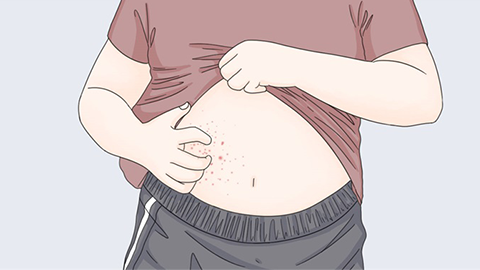How to Differentiate Scabies from Eczema
Generally, scabies and eczema can be differentiated based on factors such as causative factors, common affected areas, rash morphology, itching patterns, and contagiousness. These characteristics differ significantly between the two. A detailed analysis is as follows:

1. Causative factors: Scabies is caused by skin infestation with the scabies mite, usually transmitted through direct contact with an infected person or contaminated clothing and bedding; it has a clear pathogenic agent. Eczema is mostly caused by allergies, dry skin, external irritants, etc., and has no specific pathogen. It is related to individual constitution and environmental factors.
2. Common affected areas: Scabies commonly occurs in thin, tender, and hidden skin areas such as between the fingers, wrists, armpits, groin, and male scrotum. Eczema can occur anywhere on the body but is commonly seen on exposed or easily irritated areas such as the face, neck, back of hands, and lower legs. Its distribution is relatively scattered without a clear tendency toward concentration.
3. Rash morphology: Scabies presents characteristic skin lesions such as grayish-white linear burrows and small red papules. Males often develop pea-sized nodules on the scrotum. Eczema rashes are polymorphic and may appear as erythema, papules, vesicles, exudation, or crusts. There are no burrows or scrotal nodules. The rashes often coalesce into patches with indistinct borders.
4. Itching patterns: Scabies causes significantly worsened itching at night due to increased mite activity, which more intensely stimulates nerve endings. Eczema-related itching does not show significant day-night variation. It usually worsens after exposure to triggers and can be relieved after removing the triggers or applying anti-itch medications. The severity of itching fluctuates with disease progression.
5. Contagiousness: Scabies is contagious and can spread to others through direct skin contact or indirect contact with contaminated objects. It tends to spread in families or group settings. Eczema is non-contagious and remains limited to the affected individual, without transmission to others via contact.
When experiencing skin discomfort in daily life, one can initially differentiate between the two based on the above features. If scabies is suspected, personal items should be disinfected promptly and close contact with others should be avoided. If eczema is diagnosed, triggering factors should be avoided, skin moisture should be maintained, and scratching should be minimized to prevent skin damage and infection, thus facilitating skin recovery.




